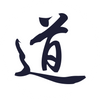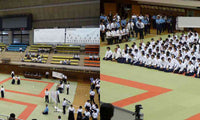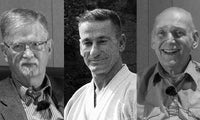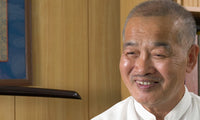Meiji Shrine Yabusame Demonstration
Japanese traditional horseback archery
Every year, in memory of Emperor Meiji, one of the biggest martial arts demonstrations in Japan takes place, at the so called "Meiji Shrine Yabusame Taikai". Honoring both, the Emperor Meiji and the gods enshrined at the Meiji Shrine, the event is held in the form of an ancient ceremony that dates back hundreds of years ago.

Yabusame at the Meiji Jingu Shrine
Culture Day and the Venue
The event takes place on the 3rd of November, a national holiday called “Bunka no Hi (文化の日)”, or Culture Day in English. This day celebrates the Emperor Meiji’s birthday since 1948.
In Japanese traditional ceremonies and especially religious ceremonies, representations of the ancient arts, including martial arts, are almost customary. The Kagamibiraki, a celebration to welcome the New Year also held at the Yasukuni Shrine, and the Meiji Jingu celebrations are only two other examples. You've probably noticed that videos of demonstrations available on YouTube are related to religious events that take place on the grounds of, or near Shinto shrines.
For more information on that event, venue and Kobubo demonstrations, please check out the "Meiji Shrine Kobudo Embu Taikai" article.

Entrance of the Meiji Jingu Shrine
Yabusame, Japanese Horseback Archery
Traditional archery has been present in Japan since ancient times and from it developed the Kyudo, the art of archery. It is still practiced as such in present times in and out of Japan. During the Heian period (794-1185), when horse fighting became more frequent, the Japanese horseback archery developed; a discipline that requires great timing, balance and concentration.
It was Shogun Minamoto no Yoritomo who aimed to perfect his Samurai's mastery of horseback archery, so during the Kamakura (1185-1333) period he imposed a new type of training: The so called Yabusame. On a track of 255 m the warriors gallop at a maximum speed and try to hit the targets along the course with blunt arrows.

Ukiyoe by Chiyoda no Onomote, late 19th century - public domain
Only experienced practitioners are allowed to use pointed arrows to aim at the wooden plate-like targets. If hit strongly enough, the plate shatters and its content sprinkles to the ground like confetti. It is an admirable achievement to hit all three targets placed along the course and only the best are capable of doing so. The manner those targets are placed simulates the adversary, a Samurai wearing the traditional armor, the "O-Yoroi". To place a fatal shot, the opening below the visor had to be hit which - considering the horse's speed - seems almost impossible.
The impressive horseback archery soon gained popularity and those competitions became true rituals. The bow itself is a traditional symbol of power and control since it was Emperor Jinmu's favorite weapon. He, considered as descendant of the Shinto deity Amaterasu, is Japan's mystic founder. Within that ritual context, a hit target from a horse's back attracts the deities' favors and brings a bountiful harvest.
Enormous concentration skills and breathing techniques to reach a stable mind are necessary to act and handle the bow calmly. What better way to achieve such a spirit than to merge it with the teachings of Zen Buddhism and Bushido, the codes of honor of the Samurai, the latter developing at around the same time. Combining technical with such mental teachings is a concept not only found within the Yabusame, but in almost all Japanese martial arts.

Meiji Jingu Shinto Priest performing a purification ritual
Particularly on the battlefield absolute control over one's body and mind was needed. And being allowed to take part in spiritual Zen rituals was an incredible honor, reaching an importance that even led to Seppuku, (the Samurai's suicide by disembowelment) after a bad performance.
Due to the gradual disappearance of civil wars and the introduction of firearms in Japan, the Yabusame more and more lost popularity in the 16th century.
However, today there are two major schools perpetuating the traditions of the Yabusame: The Ogasawara-Ryu and its rival, the Takeda-Ryu. A set of rules, compiled in the "Yabusame-Shaho", allowed the transmission of the ancestral principles of this refined Japanese martial art.
The two schools are under the roofing bond of "The Japan Equestrian Archery Association" aiming actively for the preservation and dissemination of this culture, among others by disposing some videos in English.
Hence, in the present, the Yabusame is still demonstrated on the occasion of various religious ceremonies. The most important events are held each April by the Takeda-Ryu in Kamakura at the Tsurugaoka Hachiman Shrine, and in November at the Meiji Shrine in Tokyo, alternatively by the Takeda-Ryu and the Ogasawara-Ryu. These spectacular events draw the crowds, the latter also including Kobudo demonstrations we presented in another blog article. Proven there, the fascination for the Yabusame reunites the spectators, the archers' power is admired and the golden age of the Samurai revived. Particularly the event at the Meiji Shrine attracts officials and heads of state, including the Presidents Bush and Obama.
This martial art is part of the Kisha, horseback archery, which also includes other disciplines such as the Kasagake and Inuoumono. The Kasagake, compared to the Yabusame, has different targets and developed as kind of game to practice technical elements of horse archery. The Inuoumono, that can be simply described as "dog-shooting" was also meant as military training, but became popular as sport among the Japanese nobility before it was banned at around the end of the 16th century. As for the Kasagake, some parts of mainly the formal aspects like the bowing were integrated and continued in other schools like the Ogasawara-Ryu and hence, somehow became part of the Yabusame, which became the representative art for horseback archery and is often part of Shinto festivities in Japan.

Some of the competitors before the demonstration
The Takeda-Ryu was represented in Samurai movie classics as in Akira Kurosawa's "The Seven Samurai" (1954) and "Kagemusha", the shadow of the warrior (1980). The famous Kurosawa actor, Toshiro Mifune, was a devoted follower of the Takeda-Ryu.
The Osagawa-Ryu, with its uninterrupted lineage since 1187, and combining the practice of Kyudo (archery), but also teaching etiquette, is still very present in the Japanese high society. The group is active, keeping the tradition alive and modern, maintaining an excellent YouTube channel.
Presentation of Meiji Jingu's Event by the Japanese Equestrian Association
Yabusame, a Religious Ceremony
As described before, the Yabusame also is a means of revering the Gods, who watch over Japan, thus encouraging their blessings for the prosperity of lands, people and corps. Hence, such ceremonies are deeply connected with the Shinto religion. Such e ceremony is divided into different parts:
Shutsujin, "going to battle"
To the rhythm of the drums "Yose no Taiko" the archers and intends gather and follow their head of the ceremony in a solemn march to the shrine.
Kaburaya Hoken Kanmon Sojo no Gi, the "presentation ceremony of the arrow of the fight and recitation of prayers"
The head of the ceremony and his followers arrive at the sanctuary in front of the spectators. The head of the ceremony purifies himself and cites prayers for peace, abundance and good health of the people. He receives the purified arrow of the fight.
Tenchochikyu no Shiki, the "ceremony of Heaven and Earth"
The head of the ceremony and the archers mount their horses. These form a semi-circle with their leader in the middle. There, he prays to the Gods, drawing his bow pointing towards the sky and the earth, without shooting.

Tenchochikyu no shiki
Kougun, "troop procession"
A procession then begins to lead the archers to the race, accompanied by the sound of the drums.
Subase, "at gallop"
The head of the ceremony takes his seat at the top of a tower to ensure the smooth running of the demonstration. He checks if the course is clear and the participants correctly placed. Then, the flags for the start of the race are brandished. Ready for the race, the head of the ceremony taps on the "drum of destruction", the "Ha no Taiko" and the archers begin to gallop: the test is launched.
Housha, "shooting session"
The racetrack is 218 m long and has 3 targets, spaced 65 m from each other. The archers, usually divided into two groups, are supposed to shoot the 3 targets on their mount at full gallop in less than 15 seconds. The way the targets are placed and the targets themselves are presented in a manner that the arrow is a fatal blow for a Samurai in traditional armor, aiming for the space below the visor of the helmet.
At the moment he shoots his arrow, the archer shouts "Yo in Yo", meaning Light and Darkness.
Kyousha , "shooting contest"
The contest culminates in the competing of the best 3 archers: It consists of shooting at a round target featuring a diameter of 17 cm and contains confetti. If hit, the target bursts into a multi-colored explosion.
Finally, the head of the ceremony hits the "stop drum", the "Tome no Taiko" and decides the best archer of the event while he's surrounded by all participants.
Gaijin no Shiki, the "ceremony of victory"
The best archer kneels in front of the head of ceremony, who looks at him through a fan. Then, he bangs the drum 3 times says "ei ei ei" on which the archers answer with "oh", repeating that 3 times.

Gaijin no Shiki
Naorai Shiki, "closing ceremony"
The head of the ceremony and the archers receive the sacred alcohol, the "Omiki" before mounting the horses to close the ceremony.

Naorai Shiki
The Yabusame Event at the Meiji Shrine 2018
As we were busy this year filming the Kobudo demonstrations during the event at the Meiji Shrine, we unfortunately couldn't document the Yabusame ceremony and contest. But like the past two years, this major event is on our annual list, so hopefully in 2018, and thanks to new staff members, we'll be able to take our own videos and do these incredible archers justice.






0 コメント - Meiji Shrine Yabusame Demonstration